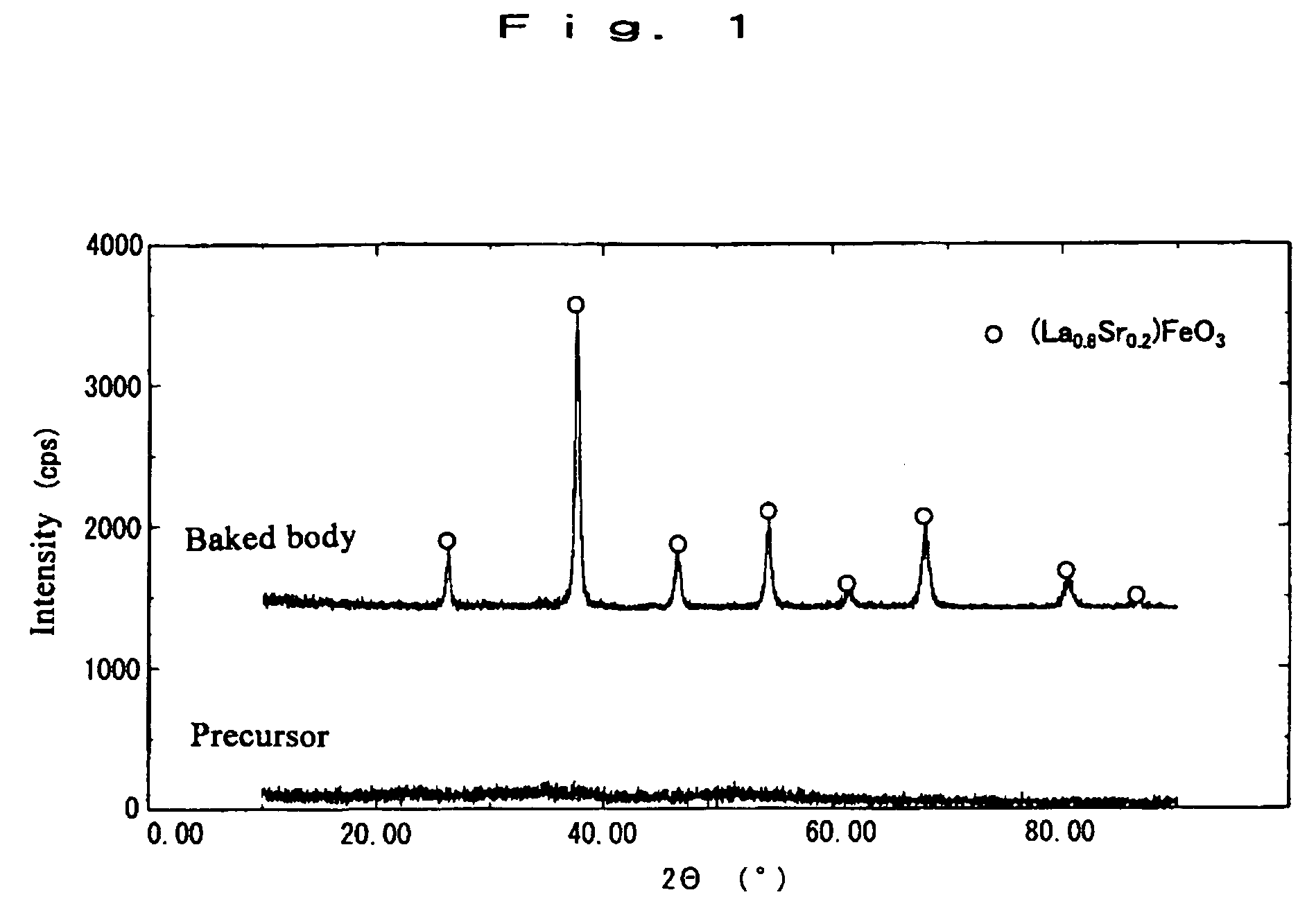Perovskite complex oxide and catalyst
a technology of complex oxide and perovskite, which is applied in the direction of physical/chemical process catalysts, metal/metal-oxide/metal-hydroxide catalysts, and separation processes, etc. it can solve the problems of limiting vehicle design freedom, low purification efficiency, and inability to achieve wide practical application. , to achieve the effect of reducing the amount of residual impurity ions, preventing the formation of precursors, and reducing the amount of residual impurity
- Summary
- Abstract
- Description
- Claims
- Application Information
AI Technical Summary
Benefits of technology
Problems solved by technology
Method used
Image
Examples
example 1
[0035] Lanthanum nitrate, strontium nitrate and ferric nitrate were mixed to obtain a mole ratio of elemental lanthanum to elemental strontium to elemental iron of 0.8:0.2:1. A starting solution was prepared by adding this mixture to water to make the total molar concentration of elemental lanthanum, elemental strontium and elemental iron present in the solution 0.2 mole / L. The temperature of the solution was adjusted to 25° C. under stirring. At the point the temperature reached 25° C., addition of ammonium carbonate solution as precipitant was continued until the pH had been adjusted to 8. Next, precipitation was allowed to progress thoroughly by continuous stirring of the solution for 12 hours with the reaction temperature maintained at 25° C. The precipitate obtained was harvested by filtering, washed with water, and dried at 110° C. The so-obtained powder was called a precursor powder.
[0036] The precursor powder was subjected to X-ray powder diffraction. From the fact that, as...
example 2
[0041] Example 1 was repeated except that lanthanum nitrate and ferric nitrate were mixed to obtain a mole ratio of elemental lanthanum to elemental iron of 1:1.
[0042] The baked product obtained was found by X-ray powder diffraction to be a perovskite complex oxide single phase of LaFeO3.
[0043] The perovskite complex oxide was found by thermogravimetry to have a weight decrease ratio of 32.5%.
example 3
[0044] Example 1 was repeated except that lanthanum nitrate, strontium nitrate and manganese nitrate were mixed to obtain a mole ratio of elemental lanthanum to elemental strontium to elemental manganese of 0.8:0.2:1.
[0045] The baked product obtained was found by X-ray powder diffraction to be a perovskite complex oxide single phase of (La0.8Sr0.2)MnO3.
[0046] The perovskite complex oxide was found by thermogravimetry to have a weight decrease ratio of 33.8%.
PUM
| Property | Measurement | Unit |
|---|---|---|
| temperature | aaaaa | aaaaa |
| temperature | aaaaa | aaaaa |
| temperature | aaaaa | aaaaa |
Abstract
Description
Claims
Application Information
 Login to View More
Login to View More - R&D
- Intellectual Property
- Life Sciences
- Materials
- Tech Scout
- Unparalleled Data Quality
- Higher Quality Content
- 60% Fewer Hallucinations
Browse by: Latest US Patents, China's latest patents, Technical Efficacy Thesaurus, Application Domain, Technology Topic, Popular Technical Reports.
© 2025 PatSnap. All rights reserved.Legal|Privacy policy|Modern Slavery Act Transparency Statement|Sitemap|About US| Contact US: help@patsnap.com

